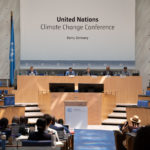According to recent estimates by the Coalition for Energy Savings the EU could potentially miss its EU Energy Savings Target by 62Mtoe. Governments can avoid this and grasp the opportunities that energy savings offer, if they follow the advice laid out in the new guidebook for strong energy savings implementation.
Earlier this year the Commission published data on the indicative national energy efficiency targets which member states had to report on by the end of April 2013 under the new Energy Efficiency Directive (EED). This information is a first signal of the member states’ intentions on how ambitiously they are preparing to implement the EED. The sum of the targets for the 19 member states counts for almost 90% of the EU overall target in 2020. However, this sum excludes the targets of 8 countries. In order to be in line with EU target in 2020 the remaining countries would need to report a collective reduction in their consumption of around 42% compared to the baseline projections used in the EED . This seems fairly difficult, not to mention unfair, considering that the reductions for the countries that have already reported is on average around 14%.
As such, it seems very likely that the total energy consumption level deriving from the sum of national targets of all Member States will exceed the prescribed level of consumption of the EU for 2020, not achieving the necessary savings to reach the EU 20% target. In a similar analysis , the Coalition for Energy Savings, estimated that the EU would realise 17% energy savings in 2020, falling short of the 20% target by 62 Mtoe.
This initial analysis indicates that member states are lagging behind and need to tap deeper into their unrealised energy efficiency potential. For the gap to close and the EU 20% energy savings target to be met, a strong implementation of the Energy Efficiency Directive (EED) that goes beyond the minimum requirements is needed.
Having this in mind and with the aim to support the efforts of increasing the level of ambition of national energy efficiency measures, CAN Europe and other members of the Coalition for Energy Savings worked together to prepare a Guidebook for Strong Implementation. The guide includes an overview of legal requirements and main deadlines as well as recommendations for good practice for the Energy Efficiency Directive. This Guidebook is meant to provide relevant information and analysis to energy efficiency stakeholders for monitoring the progress of the EED implementation at the national level. It is also a useful tool for national policy makers, who are looking to grasp the opportunities that an ambitious implementation of the EED has to offer.
Footnotes
1. The targets for the following countries are either not yet mentioned in the Commission’s website or it has not be possible to add them into the sum because of a different format: Bulgaria, Czech Republic, Lithuania, Luxembourg, Netherlands, Slovenia, Sweden and Romania.
2. The EU energy savings target for 2020 is 1474Mtoe. The sum of the targets of the 19 countries adds up to around 1317Mtoe. In order not to exceed the EU target in 2020, the sum of the consumption of the remaining countries should not exceed the 157Mtoe in 2020. Comparing this to their collective consumption foreseen by the 2007 baselineprojections (273Mtoe) would mean a 42% reduction.
3. Using available information of the national targets from 18 Member States and assuming average reductions for the rest.
Update 04/08/2012: Please note this article and analysis was written prior to latest update of the European Commission’s website on reported targets under the Energy Effiencey Directive on the 4th of September 2013. The site now includes the targets for further Member States.




